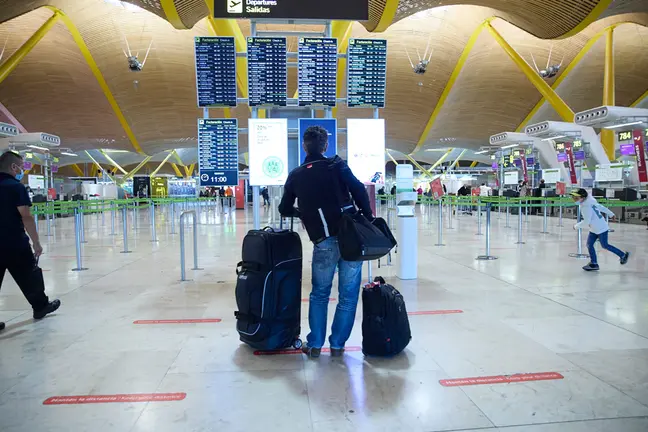For the past month, the number of new coronavirus infections has risen significantly in Finland. In its latest assessment of the epidemiological situation, the Finnish government says that "now the growth rate seems to have slowed down." However, the latest data show that there are already 7 hospital districts where the epidemic is in a worrying phase, that is, in acceleration or expansion.
"The percentage of positive samples of all tested samples has come down at national level compared to the previous week," the Ministry of Social Affairs and Health stresses in a press release. But it does not specify whether this lower percentage of positive cases is due to a significant increase in the number of tests.
On Wednesday 21 October, 222 new cases of infection and 4 deaths (3 in Turku, 1 in Tampere) were reported.
65 patients were receiving hospital care and 7 of them were in intensive care units. So far, 355 people have died from the Covid-19 disease in Finland.
Areas in acceleration phase
In Finland, the epidemiological situational picture is divided into three stages: baseline, acceleration phase and community transmission phase. Regional working groups, coordinated by the hospital districts, assess the situation in their areas based on surveillance and tracing data.
According to the health authorities, on Wednesday 21 October six areas reported having entered the acceleration phase. These areas are the Hospital Districts of Helsinki and Uusimaa, Kanta-Häme, Pirkanmaa, Southwest Finland and South Ostrobothnia and the Åland Islands.
The Vaasa Hospital District reported having entered the community transmission phase. In all other hospital districts, the epidemic is at a stable level, the Ministry says.
Incidence of new cases 52.9
The Ministry also highlights that the incidence of new cases was 22.2 per 100,000 inhabitants in the past week (12–18 October) and 29.2 per 100,000 inhabitants in the preceding week (5–11 October).
However, what counts for the purposes of restrictions is the incidence of new cases in the last two weeks of assessment, a figure that the Finnish government did not include in its press release.
The European Centre for Disease Prevention and Control (ECDC), which measures the incidence for the whole EU and EEA countries, says that the current incidence of new cases in Finland is 52.9 new cases in the past 14-day period. For its part, the Finnish National Institute for Health and Welfare (THL) puts this value at 50.5 on its website.
The Ministry of Social Affairs and Health admits in its assessment that "it is not possible to conclude yet how the epidemic will develop in the longer term."
Source of infections unclear
Some regions have been able to shorten the delays in the tracking of infections. "At national level, however, the source of infection is unclear in roughly half of the new cases," the government admits in its assessment. About one third of all new cases in Finland were reported among people already in quarantine.
During the period of 12–18 October, people under 50 years of age accounted for about 80% of all cases and people under 30 years of age for nearly 50% of the cases. People over 60 years of age accounted for less than 10% of the infections, while the share of people over 70 years of age was very low.
People over 70 years of age are in the risk group because of their age, and it is still extremely important to protect the people at highest risk of severe illness, the Ministry of Social Affairs and Health specifies.
Infections of domestic origin
During the period of 12–18 October, the majority of the new cases were of domestic origin, and only a small proportion (less than 5%) were of foreign origin. This is normal, since Finland has restricted border traffic with almost every country in the world.
Cases where the virus was contracted abroad led to only isolated instances of further infections in Finland.
In around 40% of cases with known source, the virus had spread within families. More than one in four cases were traced back to leisure activities, especially to private parties, social evenings and other gatherings among friends and family. One in five cases were traced back to workplaces, educational institutions and day-care centers.











